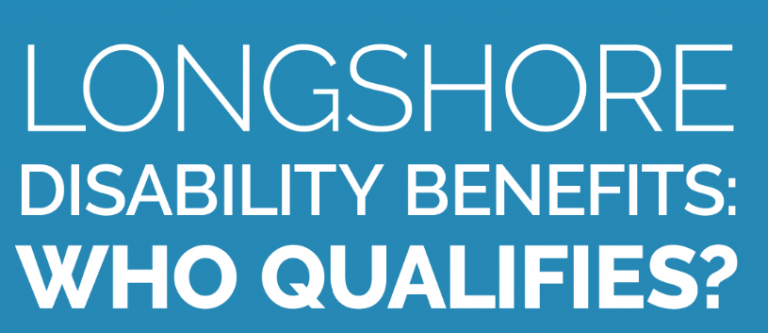The Longshore and Harbor Worker’s Compensation Act (LHWCA) provides worker’s compensation benefits for those injured while performing their duties during maritime employment. Unlike state worker’s compensation, the LHWCA does provide a right to claim benefits without having to prove the employer or another party was negligent and at fault for the worker’s injuries.
LHWCA: The Basics
The LHWCA provides monetary compensation for injured workers until they are recovered and released to return to work. Workers may claim:
- Temporary Partial Disability
- Temporary Total Disability
- Permanent Partial Disability
- Permanent Total Disability
- Medical Benefits
- Vocational Rehabilitation
- Death Benefits
Disability benefits allow injured workers to still collect a portion of their normal wages. The current rate is 67 percent of the workers’ average weekly pay rates.
Medical benefits provide compensation to pay for all medical bills related to the injury, such as doctor’s bills, travel costs, hospital bills, prescriptions, and physical therapy.
Vocational rehabilitation benefits provide compensation when workers are not able to return to their former jobs and need to learn new skills to pursue a different type of position or vocation.
Death benefits are available to surviving family members if workers died as a result of their injuries. One may also claim up to $3,000 for reasonable funeral costs, which are a separate death benefit payment.
Qualifications of Coverage Under the LHWCA
In order to qualify for coverage under the LHWCA, there are two primary tests which are conducted. The first test is called the Status Test, where the types of injured workers’ employment are evaluated to determine they are indeed considered maritime workers.

However, there are certain exceptions that exclude specific types of employees. For instance, crew members and captains who are in the service of a vessel are excluded since they are protected under the Jones Act.
The second test is called the Situs Test, which evaluates the location where workers were injured. Workers must have been working near, on, or adjacent to navigable waters when their injuries occurred. Navigable waters refer to being on the water or near it, such as on a pier.
It is important to keep in mind that, even if you do not qualify for coverage under the LHWCA, you could still qualify for coverage under other maritime acts, depending on the circumstances of the accident.
For assistance in filing a claim under the LHWCA or other maritime acts, please feel free to contact the longshoremen injury attorneys at Maintenance and Cure, part of Schechter, Shaffer & Harris, L.L.P, at 1-800-836-5830 today!




